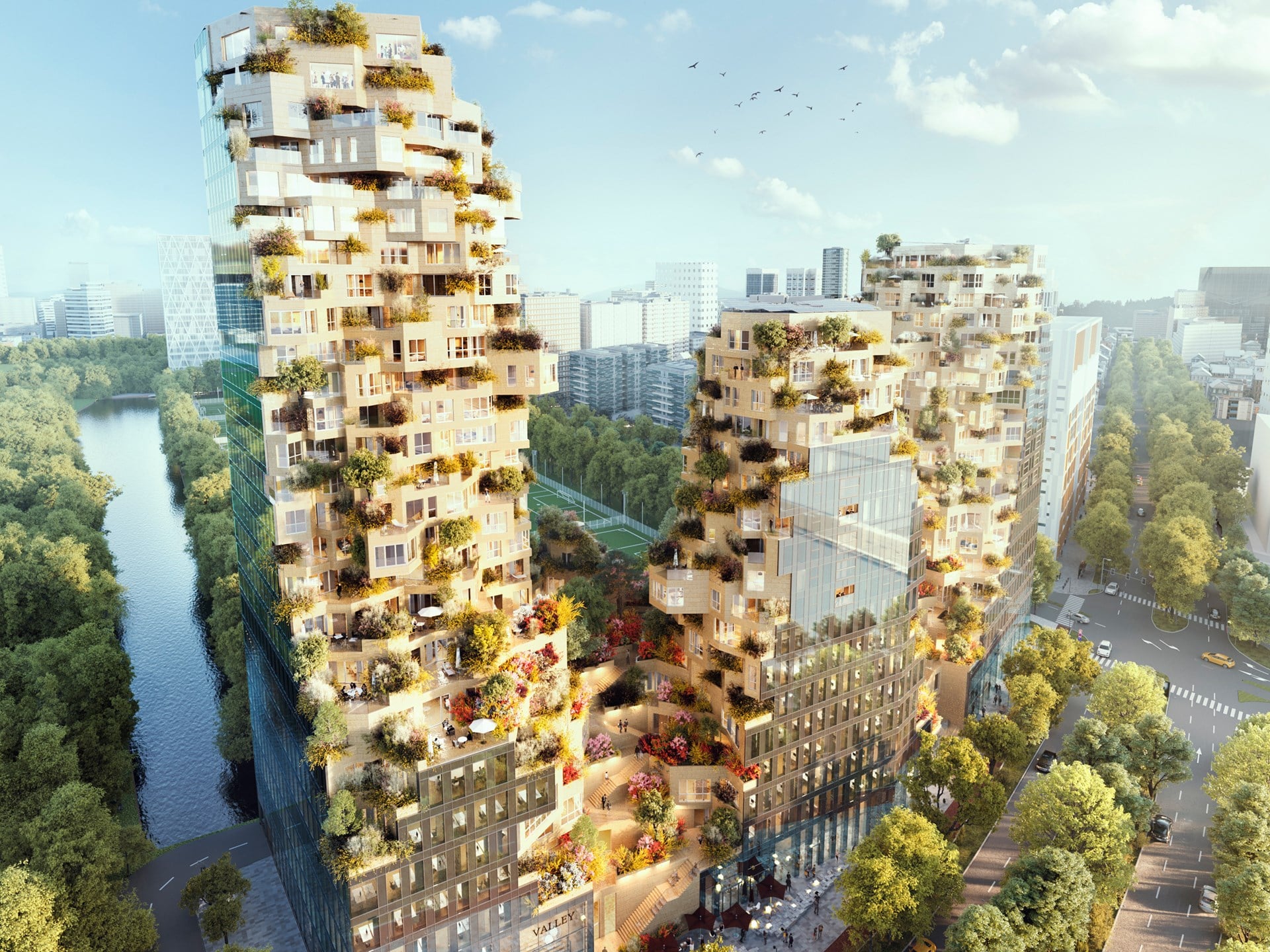Roads melting, fires raging, people dying – the fact that we are living in a climate crisis has never been more apparent than at this moment in time. Across the globe, temperatures in cities across Europe, Asia, and the US have reached record highs once thought impossible. Alongside temperatures, cities have been suffering from flash flooding, rising sea levels, and infrastructure failure as a result of extremes that they are simply not equipped to contend with. Given that 56% of Earth’s population lives in urban areas, it is about time we rethink our cities and change how they are designed, constructed, and managed. Here are 5 innovative urban solutions leading the way.
—
Urban Solutions to Tackle Climate Change in Cities
1. Hamburg’s Algae-Powered Building
A building powered by plants? This is no longer science fiction, as the Bio Intelligent Quotient (B.I.Q.) apartment building located in Hamburg, Germany, demonstrates. The striking algae biomass façade generates renewable energy from biomass and solar thermal heat. Since the system is fully integrated with the building services, the excess heat from the photobioreactors can be used to help supply hot water and heat the building. Alternatively, it can be stored for later use. Nine years after the B.I.Q was constructed, the integration of biomass into architecture is still in its initial phases. However, this project has proven that micro-algae can outperform other renewable resources with their potential to absorb carbon dioxide, recycle wastewater, and release oxygen.
Living algae buildings provide an exciting prospect for future green cities.

The world’s first algae powered building located in Hamburg, Germany. Image: Inhabitat.
You might also like: The World’s 10 Greenest Cities in 2022
2. Green Tram Tracks
A common site across many European cities such as Bordeaux, Frankfurt, and Barcelona, green tram tracks provide an abundance of benefits. The vegetation reduces incidents of flash flooding by absorbing rainwater, besides cooling the surrounding area as the vegetation transpires. With flash flooding increasing in frequency and intensity because of climate change, green tram tracks are a critical small step cities can take to protect themselves. The benefits go beyond diminishing flood risk: the swathes of green tracks provide a habitable zone for numerous insects and invertebrates, and the soft surface also lessens the vibrations and noise of tram wheels.
3. Trees in Paris
After recording a temperature just shy of 43C in 2019, the French have desperately been looking at ways to cool their sweltering capital, Paris. The answer to their problems may come in the form of the planting of 160,000 trees. This summer, a temperature of 56C was recorded bouncing from the surface of one of the treeless streets; this was double the 28C found in the shade of a nearby tree-lined boulevard. Such temperature rises are known as the urban heat island effect, which refers to the situation in which a lack of tree cover and greenery makes urban areas much hotter than rural areas. Trees are the city’s best allies in reducing inner city temperatures, as well as fighting climate change.
4. Greece’s White Buildings
Among the most innovative urban solutions around the world we cannot omit the white buildings dominating landscapes of islands like Santorini in Greece. It turns out that these white houses do not just have aesthetic purposes. Humans have used the knowledge that white colours reflect the sun for hundreds of years. A recent study of buildings using barium sulfate paint has shown that this is able to keep internal temperatures around 4.5C lower than the outside air temperature. Technological breakthroughs like this may massively help those struggling in overheated homes. It also has the potential to significantly lower the cost of cooling buildings by reducing reliance on air conditioning.

A white roof on Walmart, Nevada. Image: Walmart/Flickr
5. Bringing Nature Into Buildings
The key to tackling climate change in cities is incorporating nature into their infrastructure. Third on our list of urban solutions is The Valley, a mixed-use skyrise in the financial district of Amsterdam and an innovative project which is a shining example of how biophilia can be embedded into city life. The 13,000 plants, trees, and shrubs incorporated into the building’s façade provide improved air quality, enhanced well-being, and localised cooling benefits. The integration of nature into cities must be the default design principle. Only then can cities continue to thrive in a changing climate.

The architect’s impression of what The Valley will look like once the flora has matured. Image: MVRDV Winy Maas, Jacob van Rijs, Nathalie de Vries.
You might also like: 4 Commonly-Used Smart City Technologies


















